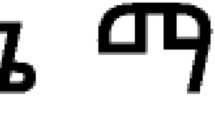Summary
An evaluation of the combination approach of Penman [1] as modified by Kohler and Parmele [2] for estimating potential evaporation (PE) is made at Poona, India, vis-a-vis the evaporation from the Russian 20 m2 tank and associated meteorological data. The use of Penman's form of wind function and net radiation computed from solar radiation, air temperature, and pyrgeometric value of sky radiation at 20.30 hrs. Indian Standard Time is seen to be adequate for obtaining reliable values of potential evaporation. Further lines of work to evaluate the potential evaporation climate over India are indicated.
Résumé
L'évaluation du rapprochement de combinaison de Penman [1] telle qúelle est modifée par Kohler et Parmele [2] pour evaluér l'évaporation potentielle (PE) a étè employée à Poona, l'Inde, en comparaison avec l'évaporation de la citerne russe de 20 m2 et des données météorologiques supplémentaires. L'emploi de la formule de Penman de l'effet du vent et de la radiation nette calculée de la radiation solaire, de la température de l'air et de la valeur pyrgéométrique de la radiation du ciel à 20 heures 30 (heure indienne) se trouve être suffisant pour obtenir les valeurs sûres de l'évaporation potentielle. De plus, des directives du travail pour évaluer l'évaporation potentielle au-dessus de l'Inde sont discutées.
Zusammenfassung
Eine Abschätzung der potentiellen Verdunstung (PE) wurde unter Benützung der Formel von Penman [1] mit der Abänderung von Kohler und Parmele [2] in Poona (Indien) durchgeführt und mit der Verdunstung von einer russischen 20m2-Wanne und gleichzeitigen meteorologischen Bedingungen verglichen. Die Benützung der Penman-Formel der Windabhängigkeit und der Strahlungsbilanz, berechnet aus Globalstrahlung, langwelliger Himmelsstrahlung und Lufttemperatur um 20.30 Uhr (indischer Lokalzeit) erweist sich als geeignet zur Gewinnung zuverlässiger Werte der potentiellen Verdunstung. Auf weitere Gesichtspunkte zur Bestimmung des potentiellen Verdunstungsklimas über Indien wird hingewiesen.
Similar content being viewed by others
References
Penman, H. L.: Natural Evaporation from Open Water, Bare Soil and Grass. Proc. Roy. Soc. LondonA 193, 120–145 (1948).
Kohler, M. A., and L. H. Parmele: Generalised Estimates of Free Water Evaporation. Water Resources Res.3, 997–1003 (1967).
Thornthwaite, C. W.: An Approach Toward a Rational Classification of Climate. Geog. Rev.38, 85–94 (1948).
Penman, H. L.: Evaporation. An Introductory Survey. Neth. J. Agric. Sci.4, 9–29. Discussions, 87–97, 151–153 (1956).
Thornthwaite, C. W., and J. R. Mather: Climate in Relation to Crops. Meteorol. Monographs.2, 1–10 (1954).
Venkiteshwaran, S. P., P. Jagannathan, and S. S. Ramakrishnan: Some Experiments with the U. S. A. Standard Evaporimeter. Ind. J. Meteorol. Geophys.10, 25–36 (1959).
Young, A. A.: Evaporation Investigations in Southern California. U. S. D. A., Soil Cons. Ser., Div. Irrigation., pp. 188, 1945.
Konstantinov, A. R., T. G. Fedorova, V. S. Golubev,et al.: Materials of the Interagency Meeting on the Problems of the Study and Grounding of Methods for the Computation of Evaporation from Water Surface and Soil. Publication Chief Geophys. Inst. Valdai, U. S. S. R., 1966.
Gangopadhyaya, M. (Privaté Communication): Report W. M. O. Working Group. Evaporation Measurement, 1969.
Bolz, H. M.: Die Abhängigkeit der infraroten Gegenstrahlung von der Bewölkung. Z. Meteorol.3, 201–203, 1949.
Idso, S. B., and R. D. Jackson: Thermal Radiation from the Atmosphere. J. Geophys. Res.74, 5397–5403 (1969).
Venkataraman, S., and V. Krishnamurthy: Clear Sky Atmospheric Radiation over India. Proc. “International Radiation Commission Symposium”, Sendai, Japan. 33–42, 1972.
Penman, H. L.: Vegetation and Hydrology. Tech. Communication No. 53. Commonwealth Agricultural Bureaux. 1963.
Kohler, M. A., T. J. Nordenson, and W. E. Fox: Evaporation from Pans and Lakes. Research Paper38. U. S. Dept. Commerce (Weather Bureau). 1955.
Author information
Authors and Affiliations
Rights and permissions
About this article
Cite this article
Venkataraman, S., Krishnamurthy, V. On the estimation of potential evaporation by the combination approach. Arch. Met. Geoph. Biokl. B. 21, 1–9 (1973). https://doi.org/10.1007/BF02245987
Received:
Issue Date:
DOI: https://doi.org/10.1007/BF02245987




